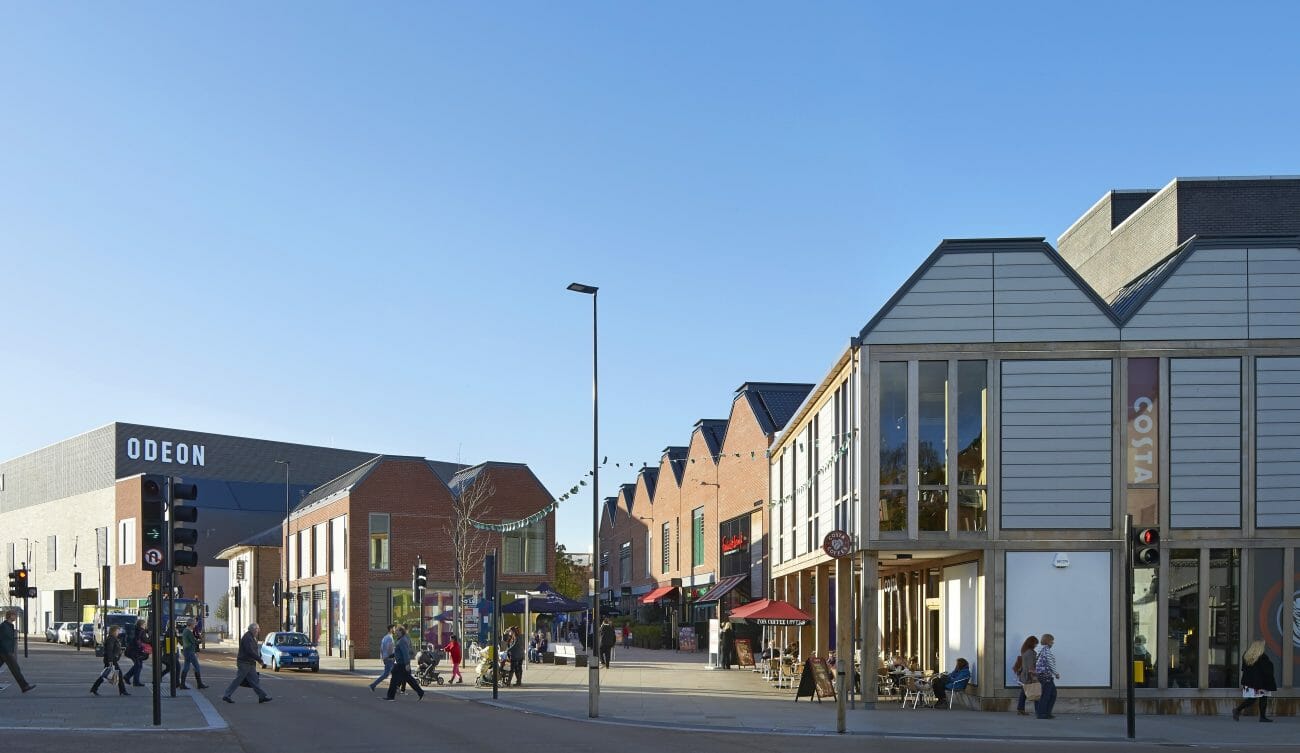The latest HDH report isn’t pretty reading for shopping destinations in Herefordshire with Hereford ranked 176th, Ledbury 248th, Ross 356th and Leominster 896th out of 1,000.
Cambridge has again been named as the most vital retail centre according to a list scoring Britain’s best and worst retail centres.
The university city topped a list of 1,000 shopping districts, compiled by strategic retail property consultancy, Harper Dennis Hobbs (HDH).
The HDH 2019 Vitality Index determines the retail health of a shopping area based on the proportion of upmarket and discount stores, vacancy rates, as well as the number of less aspirational tenants, such as pawnbrokers, money lenders and bookmakers. The suitability to the local shopper is a key factor, meaning that the presence of low-end retailers is not necessarily a bad thing as long as the local area consists largely of residents that prioritise value for money.
Cambridge – which also took first place in 2017 when the last Vitality Index was published – saw off competition from retail destinations in London, including Westfield London and Knightsbridge.
Market towns that dominate a small but affluent, and relatively rural catchment area, continue to score well – in many cases they are proving to have a ‘healthier’ high street than some large cities. Marlborough, in Wiltshire, has fallen in rank since 2017 but remains in the top 10, while two notable examples in the top 50, Berkhamsted and Marlow, have climbed in the ranking due to a fall in vacancy rates and growth in quality retail in those towns.
Taking the dubious title of least vital shopping destination for a second time was Byker Shields in Newcastle, followed by Stretford in Greater Manchester and Kirkby in Merseyside.
Jonathan De Mello, Head of Retail Consultancy at Harper Dennis Hobbs, said:
“The Vitality Ranking is a unique approach to assessing retail centres. By scoring centres based upon a number of aspects that both retailers and shoppers think of when they consider a quality retail environment, HDH provide a different perspective to rankings based solely on size or total sales.
“The changing face of the high street means retailers need to be confident their investment is likely to pay off. Quality retailers don’t want to be surrounded by empty units, discount stores and betting shops, which are a clear indicator of deprivation in the area.
“While the big cities and most prominent shopping malls should absolutely be a key priority for any retailer trading in the UK, this research highlights the fact that small but flourishing towns and suburbs can be viable retail locations, particularly as rents are typically more affordable.”
James Ebel, CEO of Harper Dennis Hobbs, said:
“This latest piece of research from HDH shows that Cambridge City Centre continues to be the healthiest retail district in Britain. The city benefits from its heritage as a centre for academia, as well as its location – less than an hour from London – which draws day-trippers as well as affluent residents.
He added that London has also performed well, with seven of the top 10 retail centres located in the capital. They include the world-famous West End, along with the office worker-orientated Canary Wharf and smaller affluent suburbs such as Richmond.
The scoring shows that a number of major cities are growing in retail quality – London’s West End, Birmingham, Glasgow and Oxford have all climbed multiple places due to a growth in quality retailers, partially facilitated by developments such as Westgate Oxford and Birmingham Grand Central. This indicates that consumers and retailers in the UK continue to gravitate towards the strongest retail centres, in many cases at the expense of smaller ‘satellite’ centres, such as nearby towns or neighbouring high streets.
Towards the bottom of the list, certain regions are more prevalent – Scotland, North West England, the West Midlands and Greater London all have at least 5 centres in the bottom 50, whereas South West England and the East of England have no centres in the bottom 50. Broken down by region, the more affluent and rural counties score highly, particularly in southern England, but also elsewhere, such as North Yorkshire.
While Greater London features prominently in the top 10, outside of Central London, the quality of retail centres is mixed – despite being home to 7 of the top 10 ranked retail centres, Greater London also holds 13 of the bottom 50 places. However, London has the advantage of seeing continually high levels of investment across the entire city, including the less affluent corners of the capital. This includes major retail developments, such as Westfield Stratford, but also extends to infrastructure – for example the £15bn Crossrail project. We continue to observe high levels of interest from retailers in areas like Shoreditch and Whitechapel, which shows that strong investment in deprived areas does trickle down to the high street.
Small towns and neighbourhoods also overwhelmingly dominate the bottom end of the list – only 4 of the bottom 50 retail centres have greater than 300 shops, whereas over half of the top 50 do. This demonstrates the fact that the primary shopping destinations are, in general, growing in strength, whereas the number of small but healthy retail centres is waning.
For more information on Harper Dennis Hobbs visit www.hdh.co.uk.
METHODOLOGY
To allow for direct comparison with the previous iteration, the methodology employed continues to measure the same variables, weighted by relative importance:
• The vacancy rate – disused and derelict units are the most obvious sign of an ailing retail area and rows of empty shops have a detrimental effect on the centre, as more aspirational customers are quickly put off visiting. We measure the vacant retail space as a proportion of the total volume of floorspace in a retail centre.
• The proportion of premium and luxury retail – upmarket retail attracts aspirational customers and will be associated with a nicer shopping environment.
• The proportion of value retail – a high proportion of value retail indicates relative deprivation and a retail offer geared towards the lower end of the market. This includes nationwide value-driven chains, such as Poundland, in addition to charity shops.
• The proportion of ‘low quality’ retail – these are retail units that damage not just the high street, but the residents and local community, by increasing debt and feeding addiction. The following class of stores fall in this category:
o Betting shops
o Pawnbrokers
o Pay-day loan shops
• The suitability to the local customer – HDH have assessed the positioning of a centre’s retail supply in relation to the demands of the local customer, given their demographic make-up. A retail centre with high vitality has a retail mix that serves the needs of its local population, whether it is lower, mid- or up market retail.
• There is also a temporal element included, as all of the aforementioned indicators are quantified over time (the past 5 years), giving greater weight to improving centres that are currently growing in quality, and penalising centres that are on the decline.




